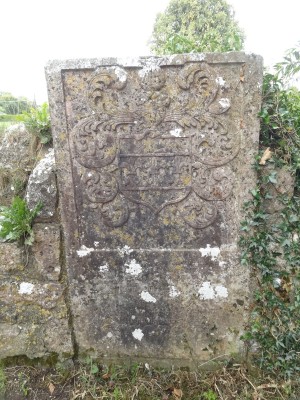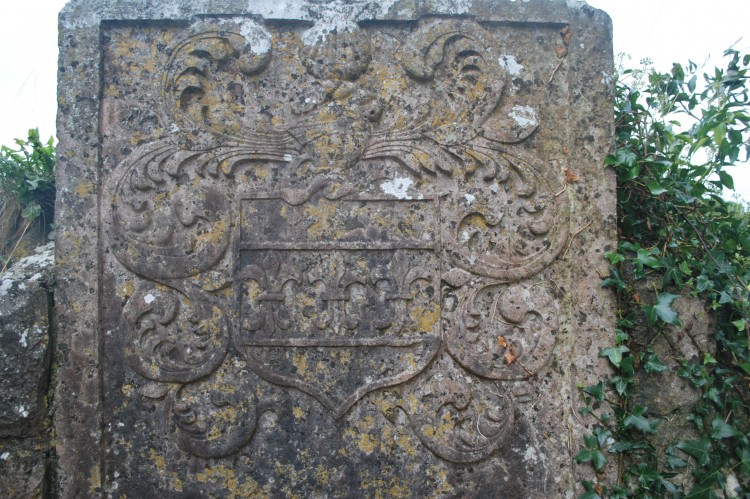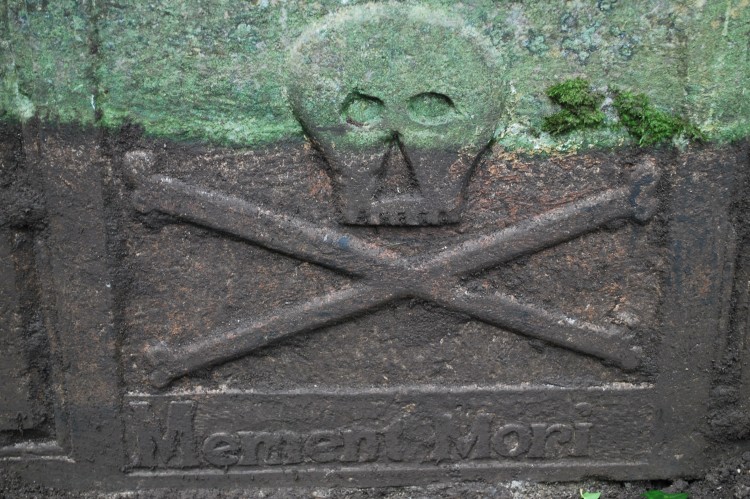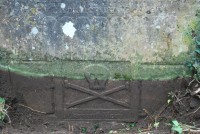WM-BMRE-0001
HIC SITAE SUNT EXUMAE THOMAE
LENNON, NUPER DE CLONCULLIN, GENEROSI
BONI PII JUST
EVITA DESCEDIT DIE JANUARII 190 17334
AETATIS SUAE 760
IN CUJUS MEMORIAM
FILII EJUS HOC MONUMENTUM
POSUERE
Translation - (Not on Gravestone): At this place are the remains of Thomas Lennon, later of Cloncullin,Gentleman, a good, pious and upright man. He departed this life 19th January 17334, in the 76th year of his age. To whose memory his sons have placed this monument.
In false relief: Elaborately carved crest, coat of arms, mantling, and an esquire's helmet, viz: a fesse surmounted by 3 fleur-de-lys, in shield surmounted by esquire's helmet above which is a scallop shell, which indicated that the deceased went on pilgrimage to Santiago de Compostela, all surrounded by scrolls of Acanthus leaves which symbolise the Gardens of Heaven
On the bottom of the stone is a Skull and Crossbones with the inscription "Mement Mori". The skull and crossbones represent the passing of life into death and the legend "Mement Mori" means "remember you will die". The combination of all reminds us to be good in this life as someday we will die.
The townland of Cloncullin lies 5km to the north of Ballymore graveyard. Thomas Lennon of Cloncullen was born c. 1658. He was married to Judith Lennon. His eldest son, John of Mullingar died circa 1742. His second son, Charles of Walshestown died circa 1761. His 3rd son was George of Doones, Co. Westmeath, who died in 1748. His 4th son, Thomas was married to Miss Sandys of Crevaghmore, Co. Longford. His 5th son was William of Newtown, who died 1741. Their daughter Elizabeth was born 1694, in 1714 she married John Devenish of Collierstown or Portlick Castle, Co. Westmeath.
The double "dates" of Lennon's death indicates the usage of two separate calendars in 18th-century Ireland. Roman Catholic’s had generally adopted the new Gregorian calendar in place of the Julian calendar in the 16th century. Protestant people carried on using the Julian Calendar between the 16th- 18th century. One of the main changes in the Gregorian calendar, was that the start of the year was now 1 January, and not 25 March, or Lady Day as it was in the Julian Calendar.









